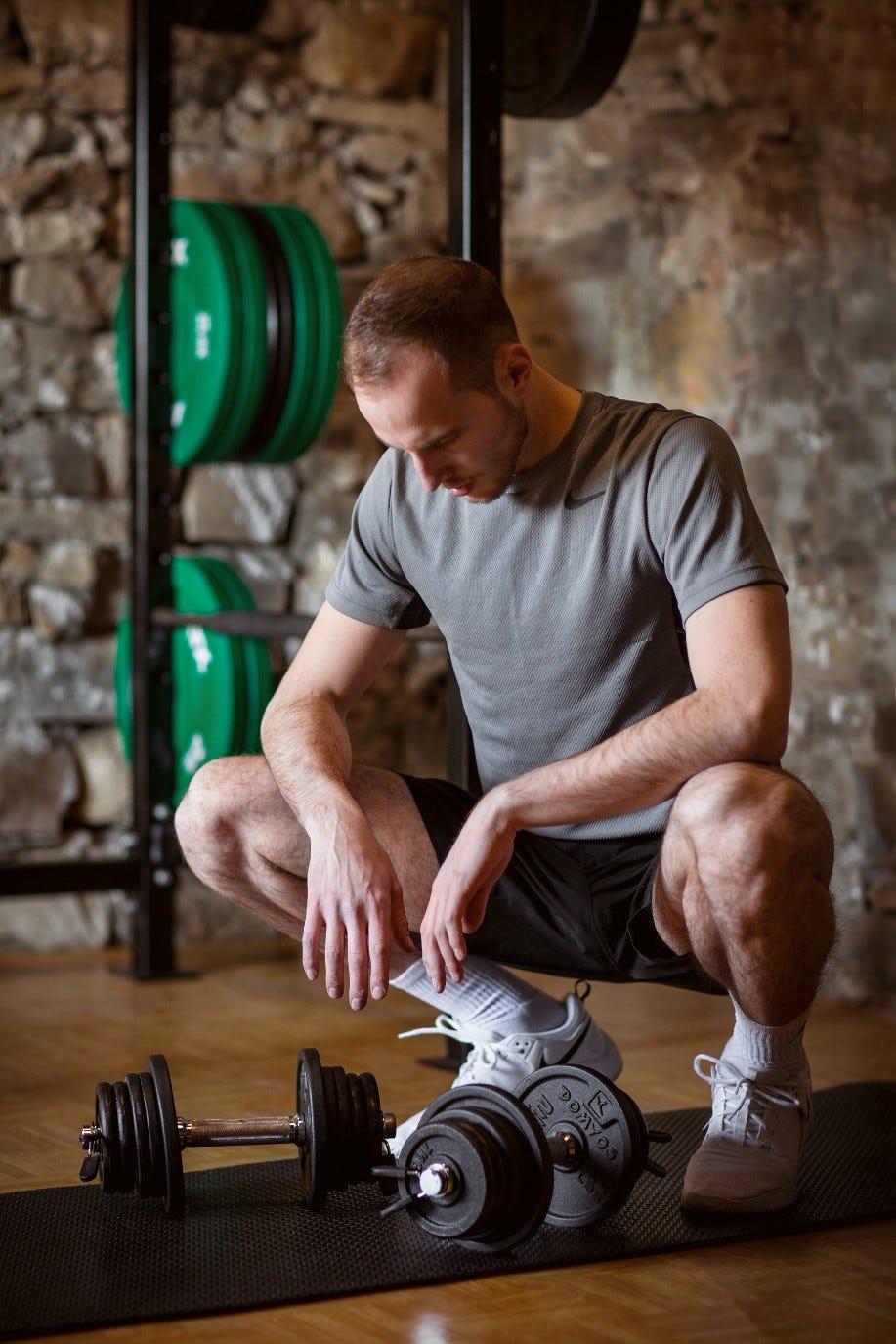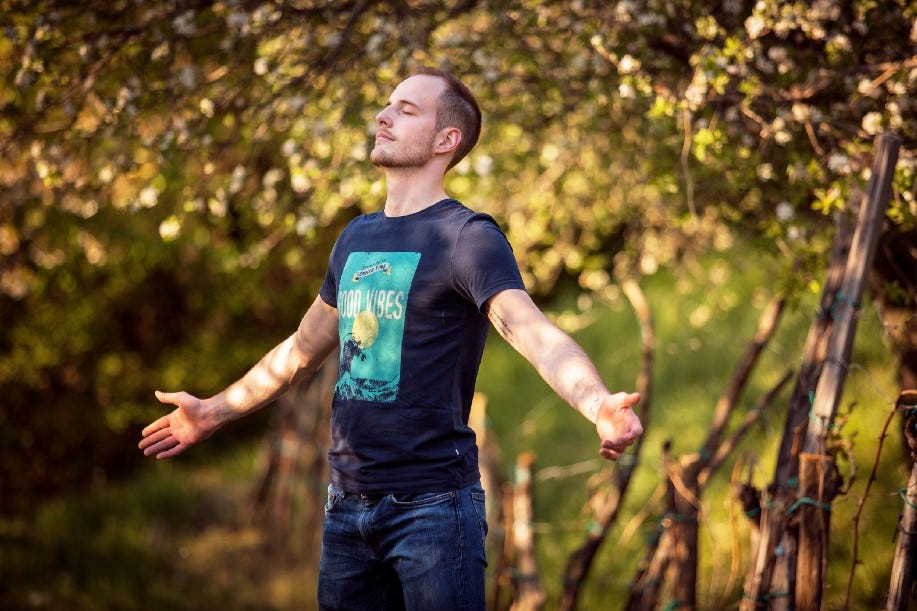Burnout as a "Chronic Injury"
How can Burnout become a "Chronic Injury" and What you can do about it.
I’ve been an athlete almost my whole life. I started playing football (soccer for my American readers and friends) at the age of 7, I then transitioned to playing volleyball at age of 13 and played in the first Slovenian volleyball league throughout my highschool and college years until the age of 21.
Sport gave me a lot!
It taught me discipline, routine, hustle, team work, and how much hard work, dedication and passion you need to achieve your goals and things you really want.

Sport also taught me a lot about my body. I learned how to overcome and push over the tiredness, muscle soreness, fatigue and how to keep going when I simply “didn’t feel like it”…
There were also some hard lessons, including that some injuries can become chronic: an injury that will negatively affect our daily lives.
We can look burnout a “Chronic Injury”.
In this article I’m going to talk about how burnout can become a “chronic injury” and what you can do about it.
What is burnout and can you ever recover from it?
There’s a lot of opposing opinions in the realm of burnout whether or not burnout is real or not, how much it affects our general health and well-being and if you can properly overcome it and recover from it or not.
Burnout is a health condition that affects both our body — our physical condition — and our mind and emotional health — and that makes burnout more tricky in comparison to getting sick with a flu or other form of diseases.
Burnout recovery burnout depends on the intensity and the stage of burnout that we experience.
In most cases, burnout is and feels like getting sick with a flu or some sort of infection disease. It often puts people in bed for a certain time period — maybe for a few days — and then takes them a few weeks or months — depending on the intensity of burnout — to fully recover and overcome it.
On the other side of the spectrum, we have the extreme versions of burnout s: Adrenal Fatigue or Dysfunction, Chronic Fatigue Syndrome or Myalgic Encephalomyelitis and Hashimoto’s autoimmune disease . Because the symptoms in those extreme cases are so extreme and difficult to treat and cure, some people are immobilized for several months and can’t do anything, it takes them a lot of time to recover — and sometimes they never fully recover at all.
I talk more about this in the article Is Burnout Real or Not?
Burnout as chronic injury
While some individuals experience an episode of burnout and rise back up right away, for some burnout can become a chronic injury that will define the rest of their life.
Sometimes and in some cases, consequences caused by burnout can become long-lasting, ever-lasting and chronic.
It’s what I call a “Chronic Injury of Burnout”.
It’s just like with sports injuries: some injuries start out as acute and overtime become chronic due to complications and poor treatment and recovery.
The same can occur with health issues: acute problems can overtime become “chronic”. This can be applied to digestive problems, food sensitivities, problems with low energy, exhaustion and even problems with mental health and burnout.
My chronic injury
Throughout my career I was always an exemplary and diligent athlete, but unfortunately all the grind and hustle backfired.
The dedication, hustling without proper rest and pushing over the limit of my body for too long caused my body to crash and burn out. Burnout occured during my last volleyball season in 2017 and since I didn’t fully recover from it, after the season I quit volleyball and ended my sport career.
Since 2017 I suffered from many more episodes of burnout and I have never fully healed and recovered from my “injury”.
There are many reasons behind why I haven’t fully healed and recovered from burnout.
It was partly due to lack of information and knowledge about how to heal from a burnout.
It was partly because I couldn’t — read wouldn’t — step away from all the physical exertion of daily practice and weekly matches because I burned during the middle of the ongoing volleyball season and I had to keep going. Of course I could stop but I wouldn’t allow myself that — but that’s a story for another time…
Because I kept going and kept pushing over my burnout, the injury of burnout became chronic.
The result is that I can’t push and go as hard and as long as others can. I can’t be physically active and do strenuous physical activity everyday because I have compromised ability to recover and it takes me a lot of time to recover fully — usually 2–3 days. I have a much smaller and lower energy budget — the amount of energy that we can use in our daily lives.
I also don’t process stress and emotional things as well as people around me and because of that I tend to accumulate stress and emotional stuff in my body, mind and psyche.
Because I burn through my energy stores rapidly and tend to accumulate a lot of stress and emotional stuff, I have to incorporate more rest into my life: both smaller portions of rest each day and regular bigger rest sessions — what I call “Destress Days”.
Long-lasting and chronic issues from burnout
The most common long-lasting consequences that burnout can leave us are:
poorer energy levels,
diminished ability to handle less stress and life’s demands,
diminished ability to recover quickly and properly,
the need for more rest and recovery,
more problems with mental health (anxiety and depression), etc.
A lower energy budget — the amount of energy that we can use in our daily lives — is also another one of the long term consequences of a single intense episode, multiple episodes or long-lasting burnout condition.
Because our amount of energy is limited, we have to be careful how, when, where and how much energy we use.
What if the burnout left you with a “chronic injury” or “chronic issue”?
If your burnout became a “chronic injury” or left you some “chronic issues” — like it did in my case — it’s not the end of the world: It doesn’t mean that you’ll be in a state of burnout your whole life.
1. Acceptance
If your burnout became a “chronic injury” or left you some “chronic issues”, you first have to accept and come to terms with that some of these consequences of burnout might be part of you and your life and might stay with you — even if it’s painful and difficult.
But that doesn’t mean we are broken!
How many people do you know who suffer from a chronic injury or a chronic health problem or issue? And yet, despite that challenge and pain, they still live their life normally and don’t let and allow their injury to define them.
What we think and believe about ourselves matterns more than we might think!
2. Release the tension and stored stress
Accumulated stress and repressed stuff in the form of tension in the body can be a big reason behind burnout and making its symptoms worse.
The body treats these accumulated stress, fatigue, repressed emotion and tension as stressor: it will think that it’s under threat and will switch into Fight or Flight mode
It’s crucial to find ways to release stored and accumulated things.
There are two parts to physical and emotional release and detoxification: the physical release of tension and emotional release. You can learn more about how to do it in the article below:
3. Make your body stronger
If you suffer from burnout as a “chronic injury”, you should focus on making your body stronger: as your body will be getting stronger, you will be able to better handle life and its deamnds, function better and be able to improve and even fully conquer the condition.
The best way to build strength is with weights in the gym. There are many ways on how to train, but when it comes to burnout, strength-based training is the best way.
Strength-based training makes our body stronger overtime and since it doesn’t include as much volume, it’s not as taxing on our body’s central nervous system, which prevents from taxing the adrenals too much and thus helps us avoid worsening our burnout condition.
You can learn more about how to train if your suffer from burnout in the article below:
4. Prioritze recovery
For Burnout Injury, recovery is important for two main reasons:
to replenish our energy stores because we tend to burn through them more quickly
to recover and regenerate from physical — including training and working out -, mental and emotional exertion.
To do that, prioritize more rest, spend more time in recovery mode and take both smaller portions of rest each day and regular bigger rest sessions to fully replenish your batteries, recharge and recover.
5. Adjust your lifestyle
Because of burnout we might have a smaller energy budget that we can use and that’s why we have to learn to economize with our energy.
We might not be able to push and go as hard and as long as others can. We might not be able to be physically active and do strenuous physical activity everyday because of the compromised ability to recover fully.
We have to learn which activities consume a lot of energy and which activities bring us energy.
We also have to learn to save up the if we’re planning on a big event that requires expensive energy “demand” — be it somethings physical (eg. a weekend hiking), mental (demanding week at the work) or fun (eg. a big party).
Adjust your lifestyle, your demands, inputs and outputs according to keep your burnout injury at bay.
I’m working on an online course about how to prevent and recover from burnout. In the course I’ll teach you everything I learned from my burnout journey, including how to improve and elevate all four pillars of the body in much more detail.
The course is in the making, but you can join the waitlist and get updates on its progress and when it’s about to launch.
Members of the waitlist will get a limited special offer when the course launches, so make sure to secure your spot and grab that special offer!
That’s it for this article. I would love to hear your opinions, questions or suggestions for the following articles.
If you enjoyed this article, share it with those you think will benefit from it.
If you have a question, an idea for a topic and suggestions, use the form linked below and I will answer it in next newsletters.
You can also follow me on social media for more tips, content and insights about burnout awareness, prevention and treatment.
I keep this newsletter free so I can help more people. If you like my work and you want to support me, you can donate. I'll be grateful from the bottom of my heart!
Love and take care of yourself, forget about worries and enjoy life! ✌
~ Jani ❤





